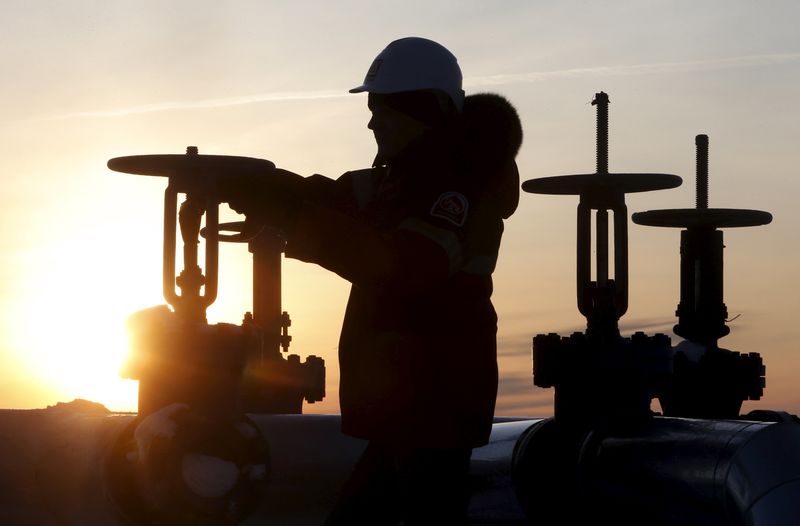By Barani Krishnan
Investing.com - Oil prices fell 4% on Wednesday, buffeted once again by Saudi attempts to flood the market with cheap crude. The World Health Organization’s official declaration of the novel coronavirus as a pandemic added to the dismal outlook for the world economy and energy demand.
Wall Street’s renewed plunge, which erased some 1,600 points from the Dow, also weighed on oil, complicating its chance of recovering from Monday’s 25% selloff.
Still, hopes of stimulus measures from the Trump administration for U.S. industries to deal with the coronavirus crisis limited some of the losses and volatility in oil after Tuesday’s rebound of as much as 10%.
West Texas Intermediate, the New York-traded benchmark for U.S. crude prices, settled down $1.38, or 4%, at $32.98 per barrel.
Brent, the London-traded global benchmark for crude, lost $1.43, or 3.8%, to settle at $35.79.
Both WTI and Brent plunged about 25% on Monday, their most in nearly 30 years, as oil market titans Saudi Arabia and Russia resolved not to cut production anymore and instead sell as much of their crude as possible at lower prices to grab market share.
While both countries insisted they were acting in national interests amid demand lost to the coronavirus crisis, their motive seemed to be one: to kill the U.S. shale industry, now the world’s largest producer of oil.
Saudi Aramco (SE:2222) Chief Executive Amin Nasser said the state-run oil giant has been instructed to boost production capacity to 13 million barrels per day from 12 million bpd now. Riyadh has been pumping around 9.7 million bpd in the past few months, but has extra capacity it can turn on and hundreds of millions of barrels of crude in storage.
“To save the shale, a federal bailout is a short-term answer, but to fix the problem, you may have to go to the source of the problem. The cause of the problem is Crown Prince Bin Salman,” said Phil Flynn, referring to Saudi Arabia’s effective ruler, who made the 180 degree turn on the kingdom’s production policy after failed talks with Russia on Friday.
“The Saudi Kingdom is going full out to flood the market with a price-war suicide mission.”
The U.S. Energy Information Administration released earlier on Wednesday relatively neutral weekly data that showed a huge jump in crude stockpiles but larger-than-expected drawdown in fuel stockpiles.
Crude stockpiles rose by 7.7 million barrels for the week ended March 6, compared with expectations from analysts for an increase of about 2.3 million barrels.
Gasoline inventories fell by 5 million barrels, versus an expectation for a draw of 2.5 million barrels, the EIA said.
Distillates stockpiles fell 6.4 million barrels, compared with forecasts for a 2 million barrel slide.
On Wall Street, the Dow edged toward bear-market territory after the WHO declared the coronavirus a pandemic and Washington state and San Francisco banned large gatherings to curb the virus outbreak.
